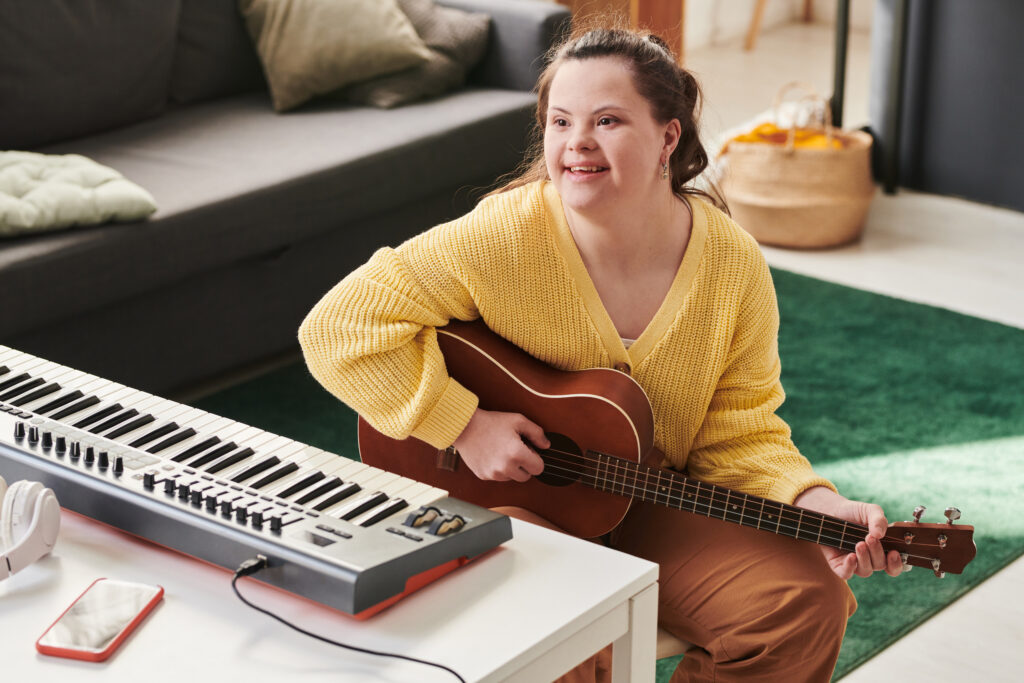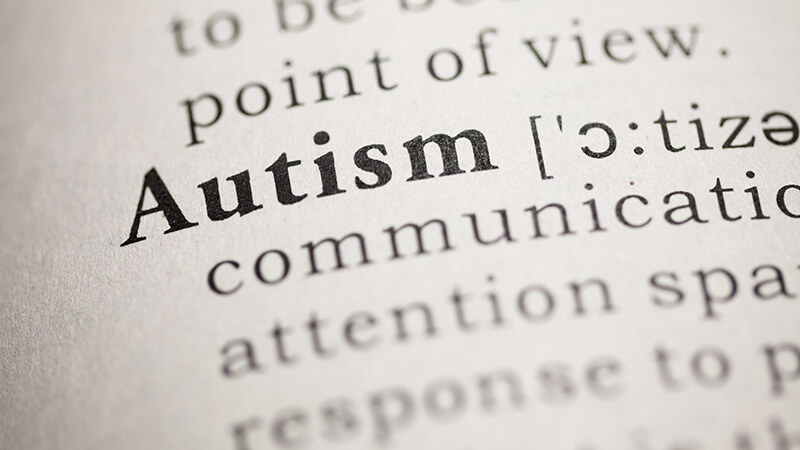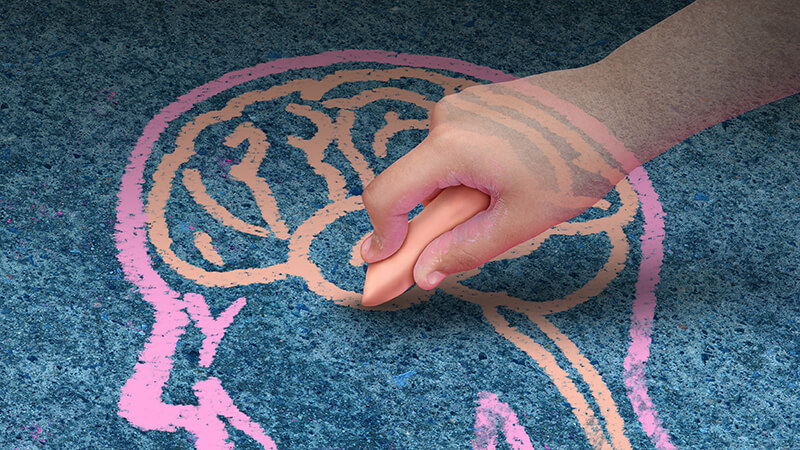Autism Spectrum Disorder (ASD) affects how individuals communicate, interact socially, and experience the world around them. While each person with autism is unique, many face challenges in social skills, emotional regulation, and sensory processing. Traditional therapies often focus on improving these areas, but one approach has garnered significant attention for its unique ability to connect with individuals on the spectrum: music therapy for autism.
Music therapy, as a structured therapeutic intervention, uses the power of music to address physical, emotional, cognitive, and social needs. For individuals with autism, music therapy has proven particularly effective in fostering communication, enhancing social interactions, and promoting emotional development. This article delves into the science behind music therapy, its benefits for those with autism, and how it can be a transformative tool in their development.
What Is Music Therapy?
Music therapy is a clinical and evidence-based practice that involves a trained music therapist using music to achieve therapeutic goals. It’s not just about playing or listening to music—it’s a structured intervention tailored to meet an individual’s unique needs.
A music therapist may use activities such as singing, playing instruments, moving to music, or composing songs to engage the participant. For individuals with autism, music therapy can be designed to target specific areas such as communication, emotional expression, motor skills, or sensory integration.
Why Music Therapy Works for Autism

Music therapy is especially effective for individuals with autism for several reasons:
- Nonverbal Communication: Many individuals with autism find verbal communication challenging, but music provides a universal language. Through rhythm, melody, and harmony, music can communicate emotions and ideas that words cannot.
- Engagement Through Interest: Research shows that many individuals with autism respond positively to music. They may exhibit heightened sensitivity to sound or display an innate affinity for rhythm and melody. This natural interest makes music an ideal medium for therapeutic engagement.
- Structure and Predictability: Music’s rhythmic patterns and predictable structure can be comforting for individuals with autism, who often thrive in structured environments. The repetition and organization of music create a safe space for learning and exploration.
- Stimulates the Brain: Music activates multiple regions of the brain simultaneously, including areas responsible for emotion, memory, and motor control. This multi-sensory stimulation makes it a powerful tool for fostering development.
The Benefits of Music Therapy for Autism
The use of music therapy for autism has been supported by research and anecdotal evidence alike. Here are some of the most significant benefits:
1. Improved Social Skills
One of the core challenges for individuals with autism is developing social skills. Music therapy can help in the following ways:
-
- Encouraging Interaction: Group music therapy sessions encourage individuals to participate in shared activities, fostering cooperation and turn-taking.
-
- Building Relationships: Singing or playing instruments together creates opportunities for bonding and collaboration.
-
- Eye Contact and Engagement: Therapists often use music to prompt eye contact and active participation, helping individuals connect with others.
2. Enhanced Communication
Music therapy can help individuals with autism improve both verbal and nonverbal communication:
-
- Facilitating Speech: Singing or rhythm-based exercises can stimulate speech production in nonverbal or minimally verbal individuals.
-
- Expressing Emotions: Music provides an outlet for expressing feelings that may be difficult to articulate.
3. Emotional Regulation
Music has a profound impact on mood and emotions. For individuals with autism:
-
- Soothing Sensory Overload: Calm and gentle melodies can help regulate sensory input, reducing anxiety or agitation.
-
- Teaching Emotional Expression: Through musical activities, individuals can learn to recognize and express emotions in a safe and structured way.
4. Development of Motor Skills
Playing instruments, dancing, or clapping to rhythms helps improve fine and gross motor skills. These activities also promote coordination and spatial awareness.
5. Sensory Integration
Individuals with autism often have heightened or altered sensory perceptions. Music therapy can provide a controlled sensory experience, helping them process and integrate sensory input more effectively.
Real-Life Applications of Music Therapy
Music therapy sessions are typically tailored to the needs of each individual. Here are some common approaches used by therapists:
1. Singing and Vocal Exercises
Singing encourages verbal communication, while vocal exercises can improve articulation, breath control, and clarity of speech. For example, a therapist might use simple songs with repetitive phrases to teach new vocabulary or concepts.
2. Instrument Play
Playing instruments such as drums, xylophones, or keyboards helps with motor skills and encourages creativity. Instruments can also be used to teach concepts like turn-taking or imitation.
3. Movement to Music
Dancing or moving to music enhances body awareness, motor coordination, and social participation. Activities like marching to a beat or following dance instructions encourage individuals to engage with others.
4. Songwriting
Creating songs allows individuals to express their emotions and thoughts in a structured way. It also helps improve sequencing and cognitive organization.
5. Listening to Music
Simply listening to music can have therapeutic effects, helping individuals relax, focus, or manage sensory challenges.
Scientific Evidence Supporting Music Therapy for Autism
Research has increasingly demonstrated the effectiveness of music therapy for individuals with autism. Key findings include:
-
- A 2017 study published in JAMA Pediatrics found that music therapy significantly improved social communication skills in children with autism compared to enhanced standard care.
-
- Research in the Nordic Journal of Music Therapy explores the potential benefits of music therapy for children with developmental delays, including its impact on speech development and social interaction.
-
- Reviews published in Front Psychiatry and Cochrane Database of Systematic Reviews suggest that music therapy may improve social skills in children with autism spectrum disorder (ASD).
These findings align with countless personal stories from families who have witnessed transformative changes in their loved ones through music therapy.
How to Get Started with Music Therapy for Autism

If you’re considering music therapy for someone with autism, here are the steps to take:
1. Find a Qualified Music Therapist
Look for a certified music therapist (e.g., board-certified in the U.S.) with experience working with individuals on the autism spectrum.
2. Set Goals
Work with the therapist to set specific, measurable goals tailored to the individual’s needs. This might include improving social interaction, enhancing communication, or managing sensory sensitivities.
3. Incorporate Music at Home
While professional therapy is essential, incorporating music into daily routines can reinforce progress. Singing, dancing, or playing instruments together can be both fun and therapeutic.
4. Evaluate Progress
Regularly assess the individual’s progress with the therapist to ensure the therapy remains effective and aligned with their developmental needs.
Music Therapy in Schools and Community Programs
Many schools and community organizations now offer music therapy programs for children and adults with autism. These programs provide access to trained professionals and opportunities for social interaction in a supportive environment.
Additionally, music therapy is often covered by health insurance or state-funded programs, making it an accessible option for many families.
Conclusion
Music therapy for autism is more than just a therapeutic tool—it’s a bridge to connection, understanding, and growth. By leveraging the universal language of music, therapists can help individuals on the spectrum unlock their potential, improve their social skills, and enhance their overall development.
For families navigating the challenges of autism, music therapy offers hope and a creative pathway to progress. Whether through structured sessions with a professional or musical play at home, the transformative power of music can open doors to a brighter future.
If you’re looking for an evidence-based, engaging, and holistic approach to supporting a loved one with autism, music therapy might be the key to unlocking their unique potential.
How New Direction For Young Adults Can Help You
At New Direction for Young Adults, we offer personalized music therapy programs designed to enhance communication, social skills, and emotional development for individuals with autism. Our certified therapists use music as a powerful tool to inspire growth, foster connection, and help young adults thrive.
Take the first step toward meaningful progress today. Contact us to learn more about our music therapy programs, schedule a consultation, or join a session. Let’s work together to unlock the potential of music for growth and lasting success.



